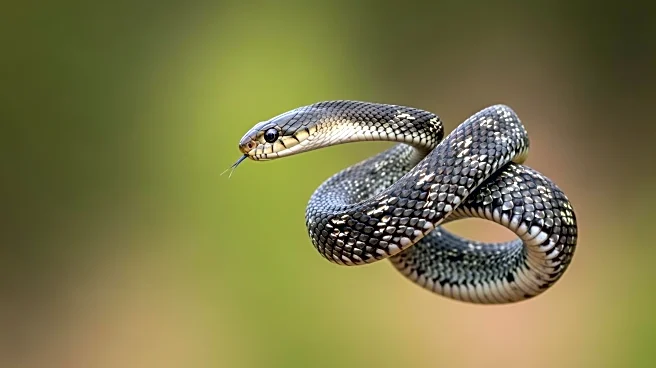What's Happening?
Scientists from Australia and France have captured high-speed footage of venomous snake bites, documenting the attack mechanisms of various snake species. The study involved recording 36 species across
three families of venomous snakes: viper, elapid, and colubrid. The footage, taken at 1,000 frames per second, provides detailed insights into how these snakes deliver venom. Vipers were found to be the fastest biters, while elapids, including cobras, were noted for their repeated biting strategy. Colubrids, with rear fangs, create crescent-like gashes for venom delivery. This research offers a comprehensive look at the evolutionary adaptations of venomous snakes.
Why It's Important?
The study provides valuable insights into the biomechanics and evolutionary strategies of venomous snakes, which can inform both scientific understanding and public safety measures. Understanding the different attack strategies of these snakes can aid in developing better antivenom treatments and improving safety protocols for handling snakes. The research also highlights the diversity in snake behavior and adaptation, contributing to broader ecological and evolutionary studies. This knowledge is crucial for regions where venomous snakes are prevalent, as it can help in educating the public and reducing the risk of snake bites.
What's Next?
Future research could expand on this study by including a wider variety of snake species and exploring how different environmental factors influence snake behavior. There is potential for further studies to investigate the impact of prey size and habitat on snake attack strategies. The findings may also lead to advancements in technology for studying animal behavior, as high-speed and 3D video analysis become more accessible. Collaboration between international research teams could enhance the understanding of venomous snakes globally.













